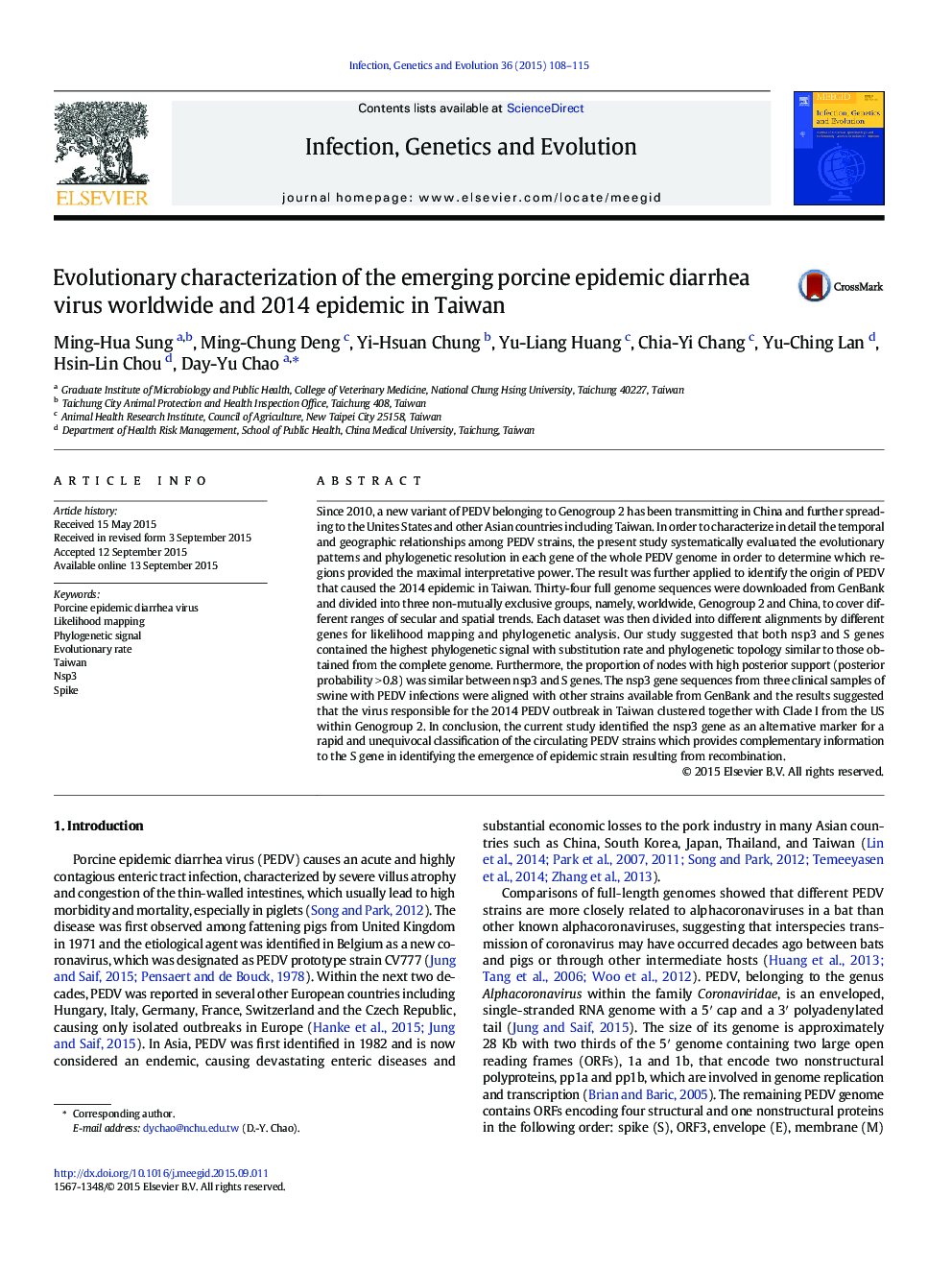| کد مقاله | کد نشریه | سال انتشار | مقاله انگلیسی | نسخه تمام متن |
|---|---|---|---|---|
| 5908528 | 1570167 | 2015 | 8 صفحه PDF | دانلود رایگان |
- Both nsp3 and S genes revealed the phylogeny similar to those obtained from the complete genome.
- Nsp3 gene could assist to identify the emergence of epidemic strain resulting from recombination.
- The sequences from the 2014 PEDV outbreak in Taiwan clustered with Clade I viral sequences from the US within Genogroup 2.
Since 2010, a new variant of PEDV belonging to Genogroup 2 has been transmitting in China and further spreading to the Unites States and other Asian countries including Taiwan. In order to characterize in detail the temporal and geographic relationships among PEDV strains, the present study systematically evaluated the evolutionary patterns and phylogenetic resolution in each gene of the whole PEDV genome in order to determine which regions provided the maximal interpretative power. The result was further applied to identify the origin of PEDV that caused the 2014 epidemic in Taiwan. Thirty-four full genome sequences were downloaded from GenBank and divided into three non-mutually exclusive groups, namely, worldwide, Genogroup 2 and China, to cover different ranges of secular and spatial trends. Each dataset was then divided into different alignments by different genes for likelihood mapping and phylogenetic analysis. Our study suggested that both nsp3 and S genes contained the highest phylogenetic signal with substitution rate and phylogenetic topology similar to those obtained from the complete genome. Furthermore, the proportion of nodes with high posterior support (posterior probability >Â 0.8) was similar between nsp3 and S genes. The nsp3 gene sequences from three clinical samples of swine with PEDV infections were aligned with other strains available from GenBank and the results suggested that the virus responsible for the 2014 PEDV outbreak in Taiwan clustered together with Clade I from the US within Genogroup 2. In conclusion, the current study identified the nsp3 gene as an alternative marker for a rapid and unequivocal classification of the circulating PEDV strains which provides complementary information to the S gene in identifying the emergence of epidemic strain resulting from recombination.
Journal: Infection, Genetics and Evolution - Volume 36, December 2015, Pages 108-115
